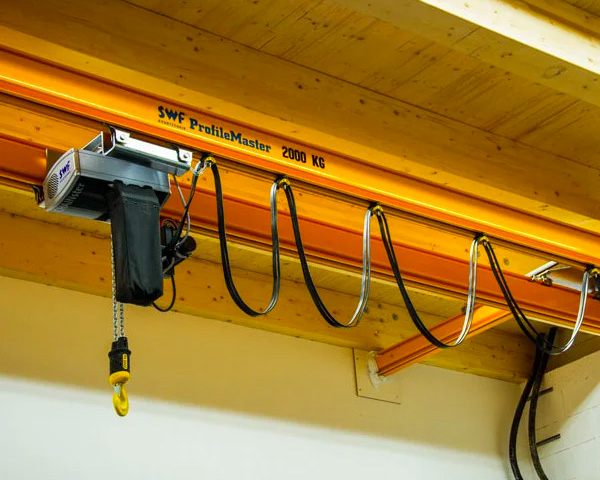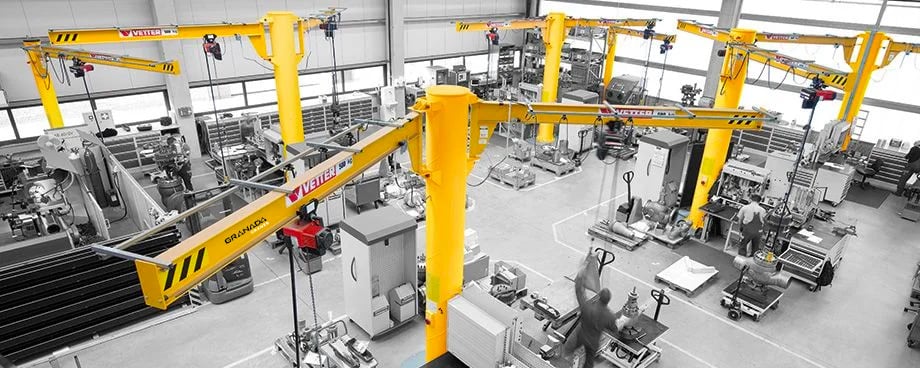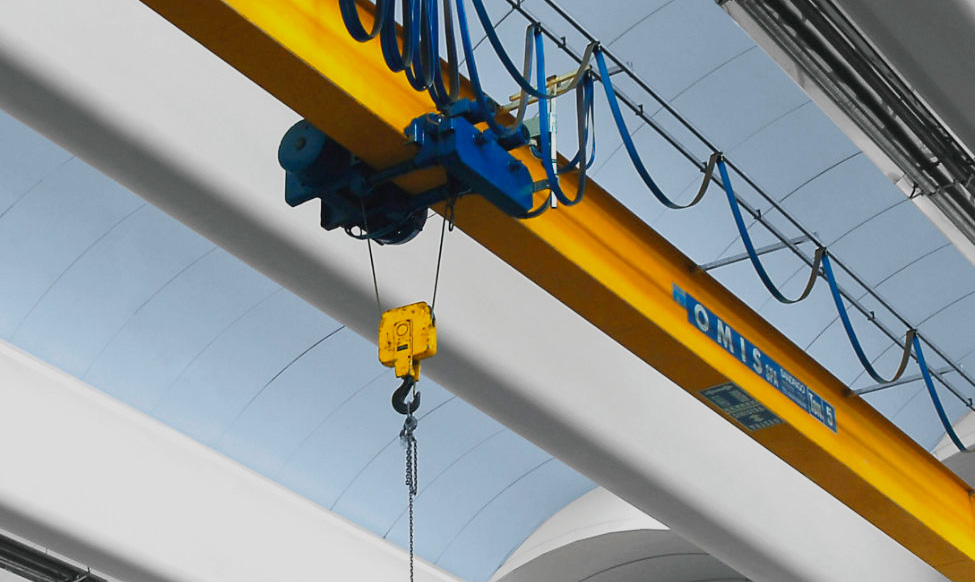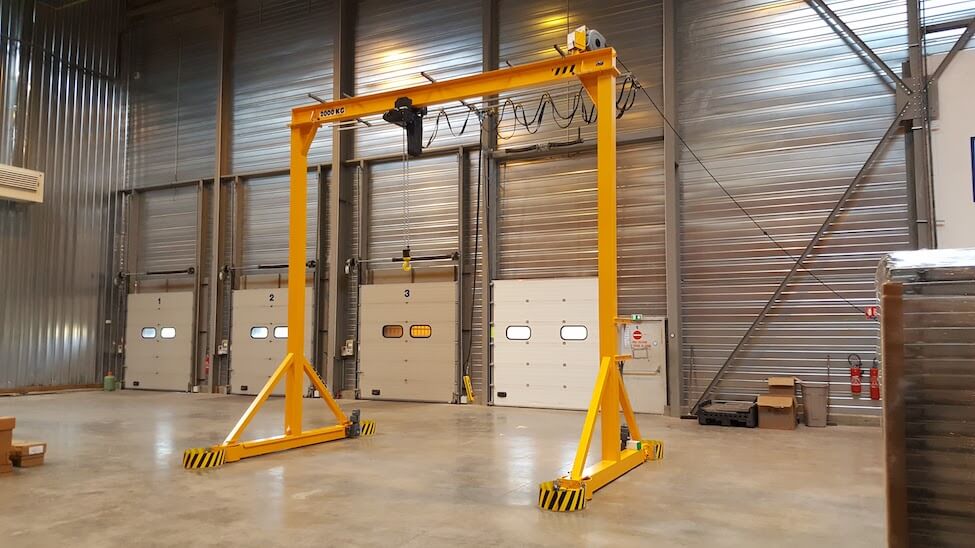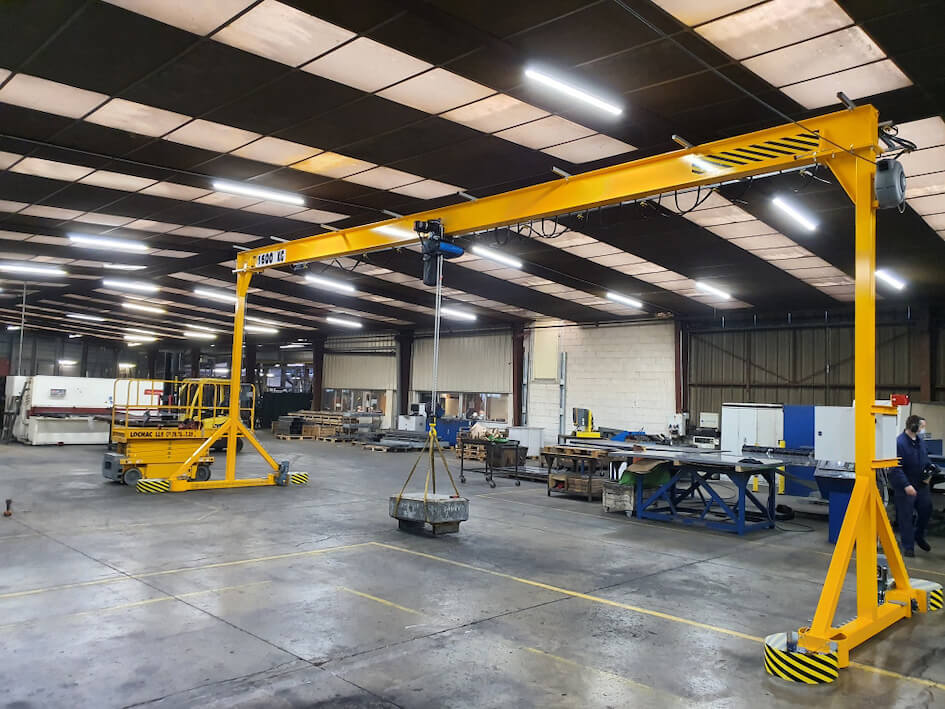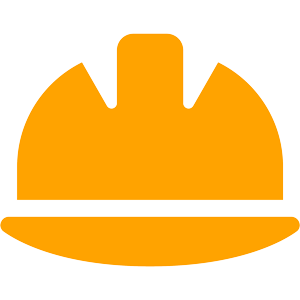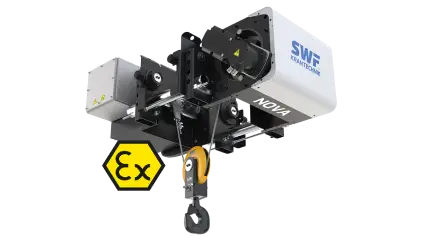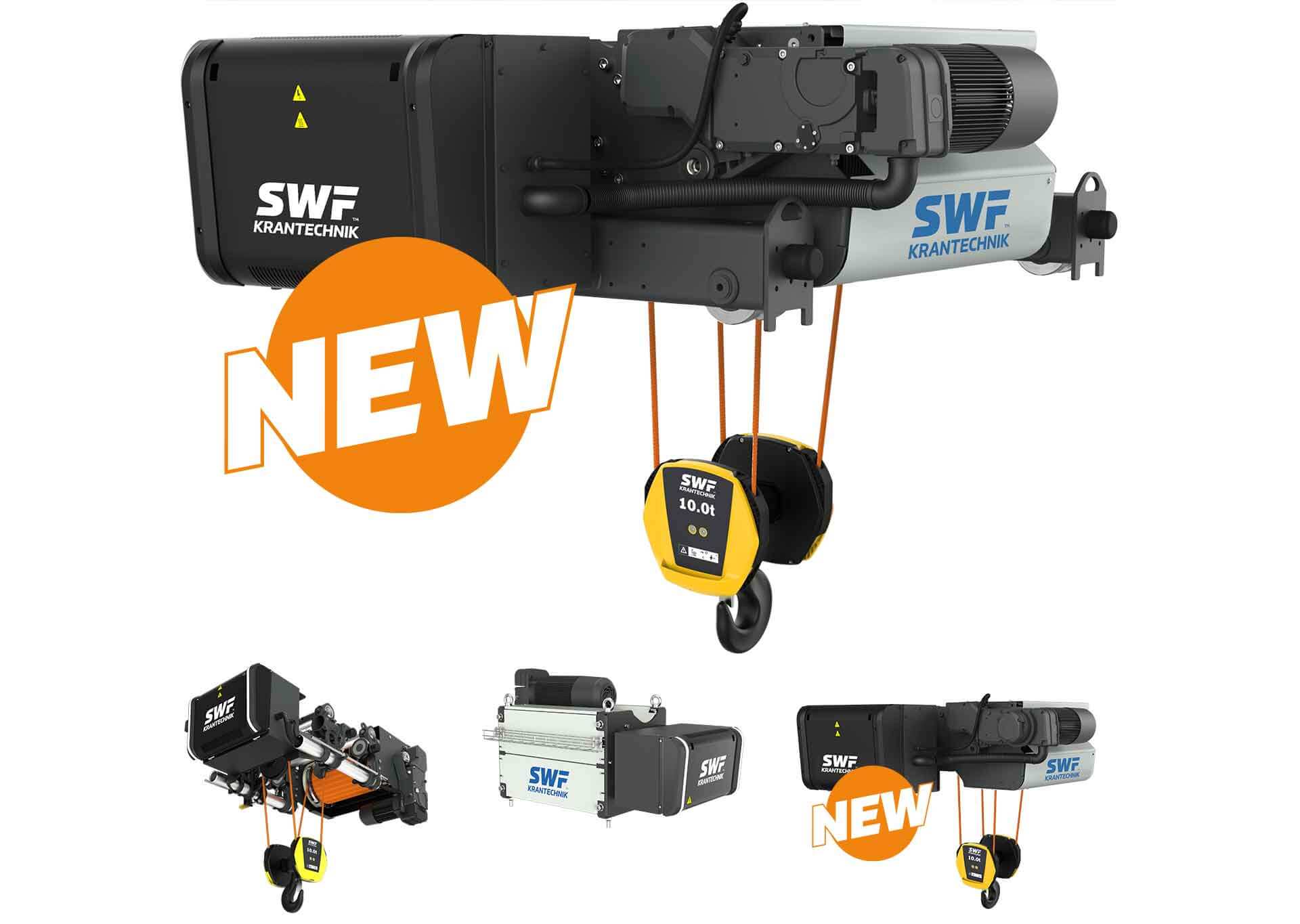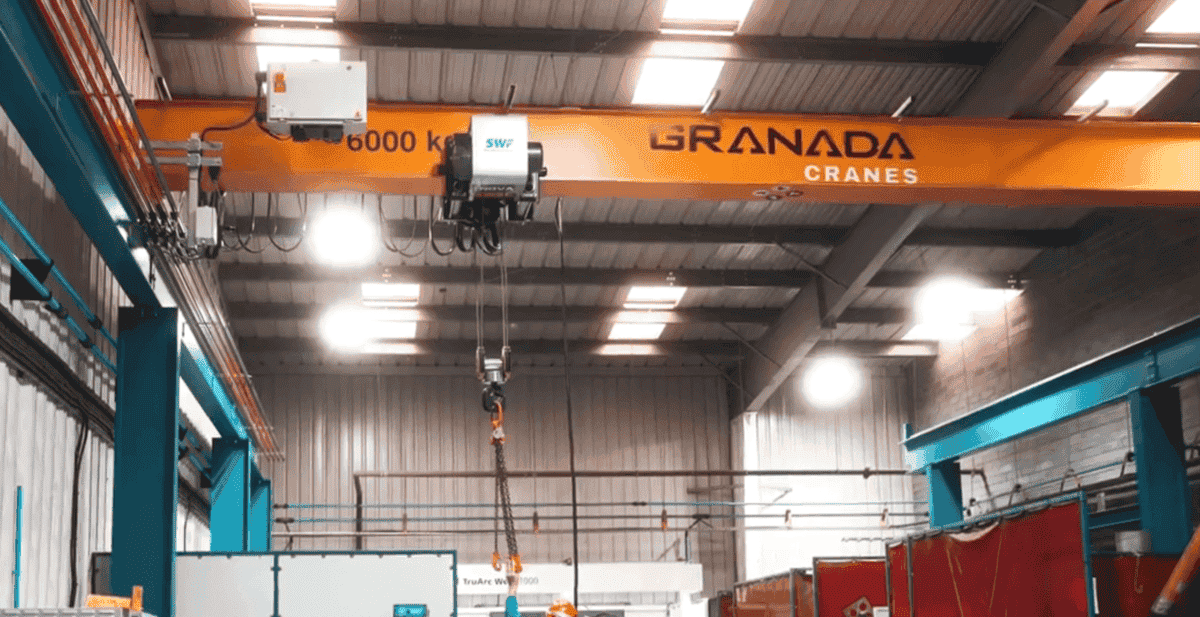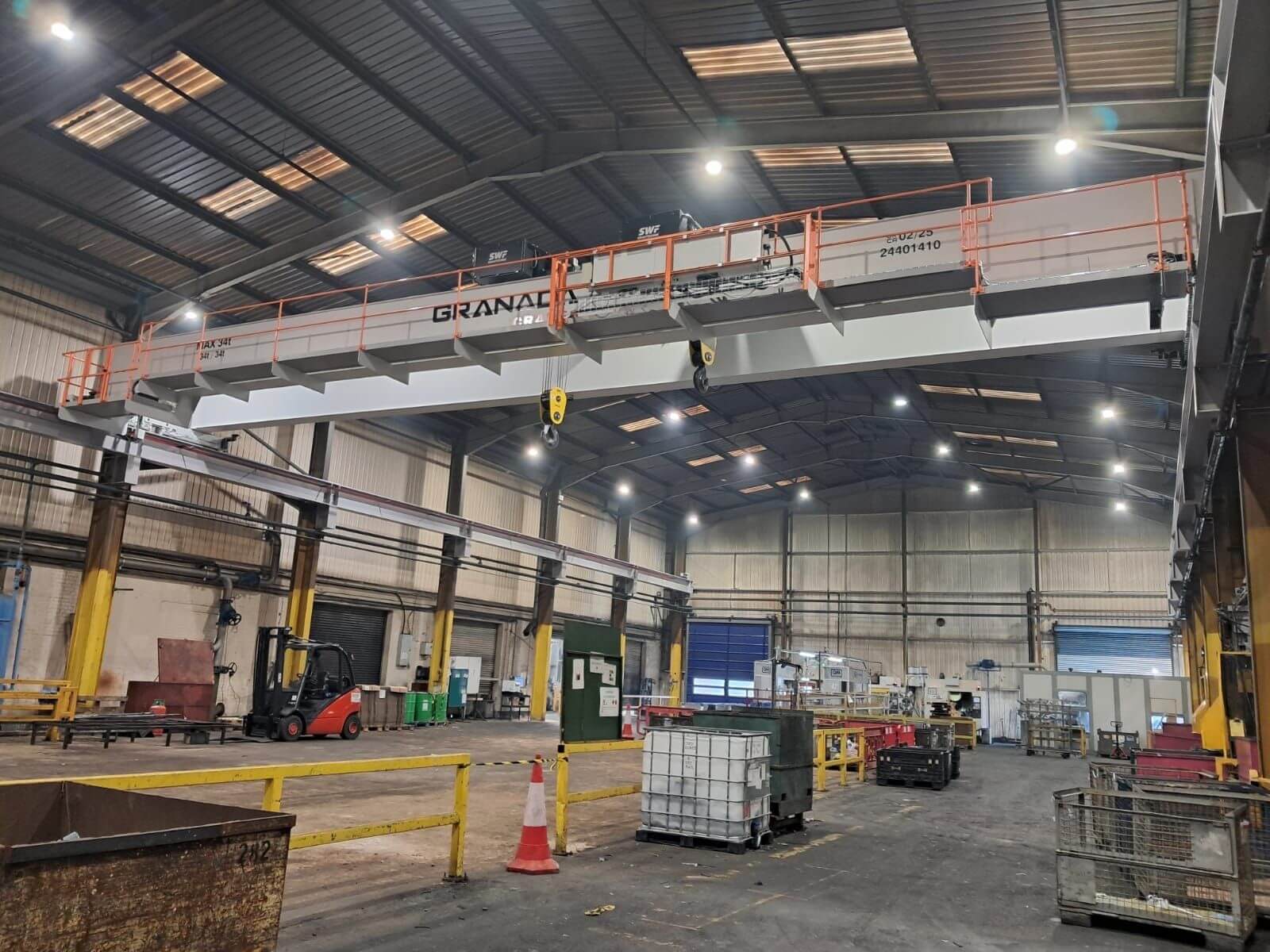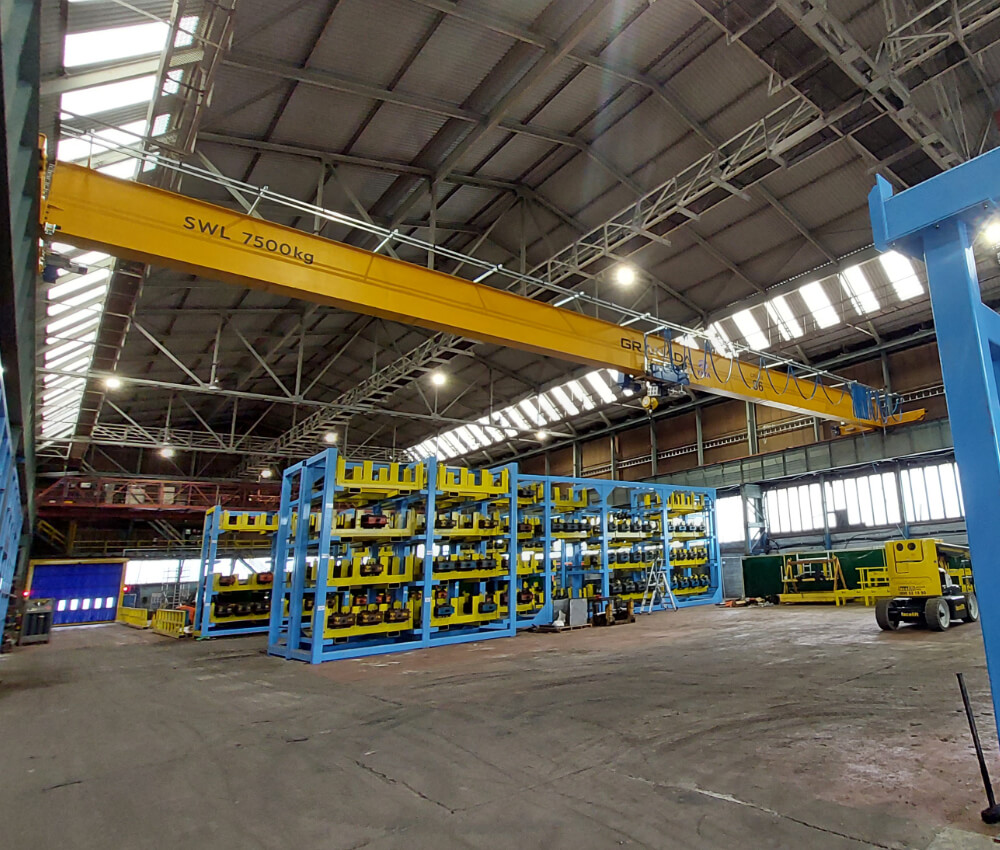An overhead crane, also known as a bridge crane, is a type of crane found in industrial environments. It consists of parallel runways with a traveling bridge spanning the gap. A lifting component, known as a hoist, travels along the bridge. This type of crane is typically used for lifting and moving heavy or large objects within a limited area, such as in manufacturing facilities or warehouses.
The primary components of an overhead crane include:
- Bridge: This is the load-bearing structure that spans the width of the bay. The bridge moves along the runways longitudinally.
- Runways: These are the rails or beams that support the bridge and run the length of the facility.
- Hoist: The hoist is mounted on the bridge and is the part of the crane that actually lifts and lowers the load.
- Controls: Overhead cranes can be controlled by an operator using a pendant station, wireless controller, or sometimes from a cabin attached to the crane itself.
Overhead cranes are capable of moving loads up and down, as well as back and forth along the bridge, providing three axes of hook motion. They are highly efficient for repetitive or heavy lifting tasks and can significantly increase operational efficiency in settings where moving large or heavy loads is a regular task.


